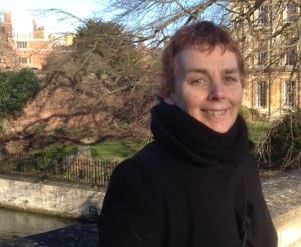 The ‘transformed’ health visiting service is described by the 4-5-6 model. These are the four levels of the health visitor service; the five universal health and development reviews for all children at key stages; and a focus on the six high impact areas which are very important to good child health outcomes and where evidence shows health visitors make a significant difference. Sabrina Fuller, NHS England explains how these have transformed outcomes for parents.
The ‘transformed’ health visiting service is described by the 4-5-6 model. These are the four levels of the health visitor service; the five universal health and development reviews for all children at key stages; and a focus on the six high impact areas which are very important to good child health outcomes and where evidence shows health visitors make a significant difference. Sabrina Fuller, NHS England explains how these have transformed outcomes for parents.
Health visitors can make a real difference to outcomes for young children and their families.
We’ve focussed on six areas: maternal mental health; transition to parenthood including early attachment; breast-feeding; healthy weight; child development including school readiness, and preventing accidents and managing minor illness. Local authorities, the future commissioners of health visiting services, include many of these within their own priorities.
Let’s look at how we demonstrate that health visitors are delivering better outcomes in these areas:
It’s worth bearing in mind that health visitors work in partnership with a range of services and, as early years health and wellbeing experts, health visitors have an important leadership role. So we don’t need to separate out the role of health visitors. We need to focus on what’s being achieved, and be very clear on the health visiting contribution.
The six high impact areas were published last year. They include a section on demonstrating success, which suggests the indicators that can evidence improved access, effective delivery, outcomes and user satisfaction. Obviously outcomes are the most important measure, but at the same time are the least directly attributable to contribution of health visiting services.
Let’s look at what we know about progress with the six high impact areas:
Indicators for the transition to parenthood are the public health outcomes of teenage pregnancy – rates are falling; smoking at time of delivery – also falling; and low birth weight, which is stable. Public health outcome indicators are under development for maternal mental health, although a standardised indicator isn’t currently available. Breastfeeding at 6-8 weeks is improving, and obesity rates in reception age children are falling.
Managing minor illness and accident prevention for 0-5s can be evidenced by their A and E attendances (rising); unplanned admissions (stable) and admissions for injuries (falling). Levels of dental decay at five (too early to say whether this is rising or falling); MMR vaccination coverage at five (which is improving); child development at two (which will be measured by Ages and Stages Questionnaire scores still under development), and school readiness indicators (again, too early to say whether this is improving) can all be used to evidence child development and health and wellbeing.
Effective delivery and access can be evidenced nationally, or using data collected, collated, reported and analysed locally in partnership between providers and commissioners.
Access to services to support delivery on the six high impact areas is measured through locally and nationally collated indicators of delivery of the five universal Healthy Child Programme (HCP) reviews which will form the mandated touch-points after the transfer of commissioning to local authorities. The indications are that increased health visitor workforce is resulting in steady improvements in delivery of HCP reviews.
You can have a look at one of my other blogs which sets out progress on access.
Indicators of effective delivery evidence the targeted packages of care delivered as part of the four tiered progressive model of health visiting. The NHS England health visitor service specification provider performance report RAG (that is red/amber/green) rates a number of indicators of effective delivery such as progress with the development of multi-agency pathways on maternal mental health, early attachment and healthy weight. The increase in the number of providers rating green indicates a steady improvement. Other indicators for local use are suggested in the guidance on the six areas.
Public health outcomes for 0-5s, benchmarked by local authority are another way we review how health visitors can demonstrate how they improve. These are available here.
Perhaps the most important way we can assess whether we are making a difference is to ask parents themselves. Through the health visitor service specification we require provider services to measure parent experience using a validated tool such as friends and family test, to analyse the results, and to use the findings as a basis for continuous service improvement.
NHS England has commissioned Picker, an organisation that specialises in this work, to develop a consistent national survey that supports improved collection of service user feedback and evidencing of the difference health visitors make. The finished survey tool will be available to all providers.
So, while we don’t have all the data that tells us specifically and conclusively that health visitors are making a difference, we do have a range of indications from different sources around outcomes. However, it’s important, especially as 0-5 public health commissioning moves to local authorities, that health visiting services continue to focus on developing good data gathering systems.
They should work with commissioners to define reporting requirements and then collate, analyse and report these different data sources.
This will enable them to tell the story of effective health visiting support giving every child the best start in life.
Sabrina Fuller is Head of Health Improvement at NHS England
